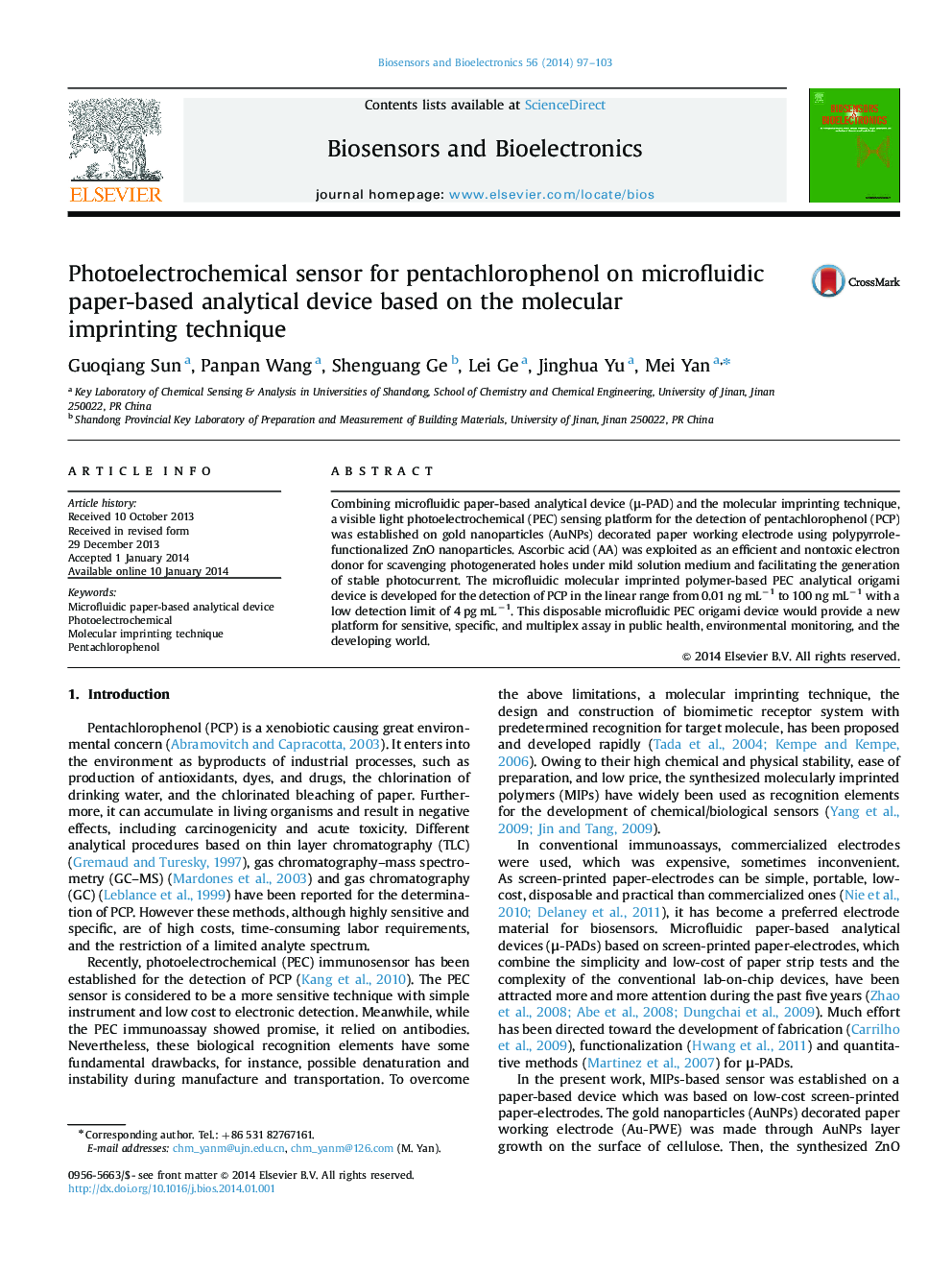| Article ID | Journal | Published Year | Pages | File Type |
|---|---|---|---|---|
| 866622 | Biosensors and Bioelectronics | 2014 | 7 Pages |
•A PEC sensor was established on a paper-based device which based on low-cost screen-printed paper-electrodes. The paper-based sensor was developed for highly sensitive PCP assay.•The AuNPs decorated paper working electrode (Au-PWE) was made through AuNPs layer growth on the surface of cellulose.•The polypyrrole-functionalized ZnO nanoparticles were attached to the electrode surface.•The sensor was connected μ-PAD and the molecular imprinting technique, could be successfully applied to the detection of PCP.
Combining microfluidic paper-based analytical device (μ-PAD) and the molecular imprinting technique, a visible light photoelectrochemical (PEC) sensing platform for the detection of pentachlorophenol (PCP) was established on gold nanoparticles (AuNPs) decorated paper working electrode using polypyrrole-functionalized ZnO nanoparticles. Ascorbic acid (AA) was exploited as an efficient and nontoxic electron donor for scavenging photogenerated holes under mild solution medium and facilitating the generation of stable photocurrent. The microfluidic molecular imprinted polymer-based PEC analytical origami device is developed for the detection of PCP in the linear range from 0.01 ng mL−1 to 100 ng mL−1 with a low detection limit of 4 pg mL−1. This disposable microfluidic PEC origami device would provide a new platform for sensitive, specific, and multiplex assay in public health, environmental monitoring, and the developing world.
